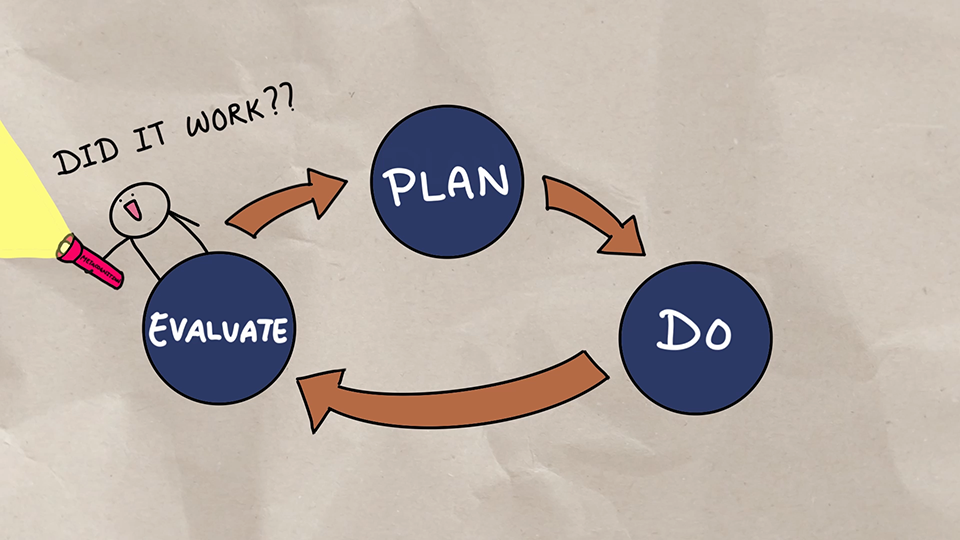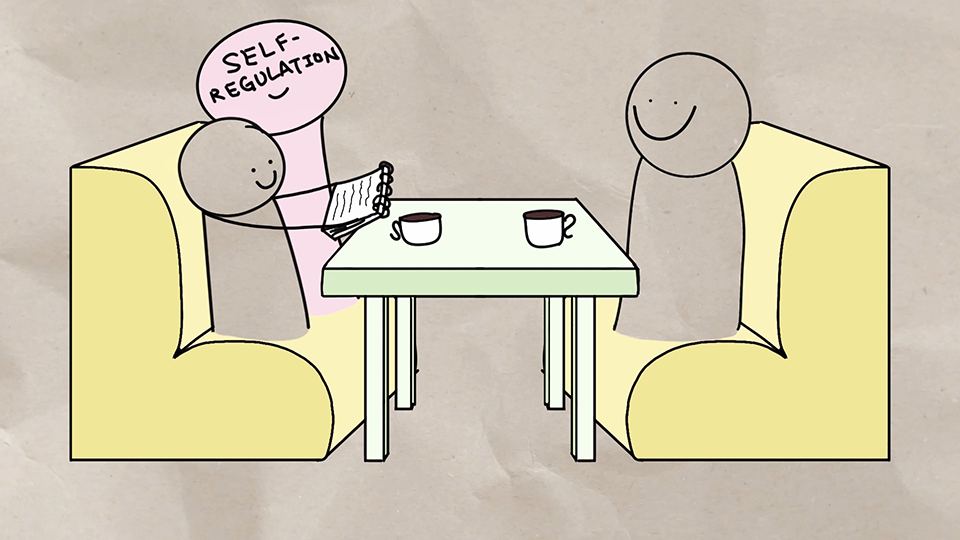Use self-regulated learning to work through challenges
To work through the challenges of training and your project, you and your team need a process to plan, test, and revise your approach. As a team lead, you want to know how to support your team members while they're in training.
Self-regulated learning
Imagine you're working on a project. You realize you've tried the same solution, which isn't working, over and over. You're hoping "this time it'll work!" You apply metacognition and recognize that you're spinning your wheels. You pause, regroup, and make a plan. You then try your plan and evaluate how successful it is. Based on the results of your evaluation, you revise the plan and try it again. This iterative process is called self-regulated learning.

Self-regulated learning is a systematic, goal-oriented, behavior-based learning strategy. When you practice self-regulated learning, you can become a strategic and effective learner. The approach is similar to the scientific method. It uses a three-phase iterative feedback loop:
Plan. Set a goal and figure out how to approach it. Ask yourself "What’s my goal? What strategy will I use?"
Do. Try the plan and record the result. Ask yourself "Did it work?"
Evaluate. Examine your notes about what you tried. Ask yourself "What worked? What should I change?" If your plan wasn't as successful as you hoped, use the information you gathered in steps 2 and 3 to modify the plan. Then try it again.
Tip
This same strategy can help you when you're solving problems independently or collaboratively and emotions are involved. You can pause, recognize and regulate your emotions, and stay on course.
Supporting self-regulated learning in others
When you're in a role of mentor or leader, you can encourage self-regulated learning in others. Doing so can help them be more successful learners. You can act as a mirror or a coach, give them feedback on their work, and help them strategize about their processes.
Tip
To act as a mirror when you mentor, be fully present to the person talking to you and actively listen to them. Confirm your understanding of what they said by telling them what they said. This process also helps the other person clarify their perspective.
The first step when you mentor is to understand the other person's issues so you can guide them to a strategic approach. Recognize that they might be stressed already by the time they get to you. You might need to pause and assess their perspective. You can ask "Can you name what's difficult?" Or ask "What assumptions are you making about this activity? What if you didn't make those assumptions?"
Invite them to try different perspectives by suggesting they observe from another vantage point or talk to someone who has a different perspective. Ask them to consider the problem differently by saying "Is there another way to think about this?"
Important
During this process, reassure the person that there are no wrong answers.
If you sense that they have a negative inner dialogue, try to give them another, more positive script. For example, maybe they say "I can't check my own work. I'll just miss all the errors." You can say something like "You can do it. You can get better at finding errors with practice."
Approaches to strategically work through challenges
You can help others strategically work through tasks that seem difficult or overwhelming. Here are some approaches to try:
Help a learner identify the plan they used. They might not think about their approach as a formalized plan.
Ask clarifying questions like "Can you take me through your process? Tell me more about why you did this step next."
Provide useful feedback about their strategy. You could ask "Was there was a missed step? Can you recommend another approach?"
Work with them to break down an overwhelming task into smaller, achievable tasks.
Encourage them to use an iterative feedback loop to try their plan, assess it, adjust the plan, and test again.
Suggest they pay attention to their thoughts and actions to become aware of feelings of panic, wheel spinning, and unproductive time.
Suggest they keep a log to track events, to track testing and results, and to troubleshoot problems. Recommend that they review it with a mentor to get feedback.
Tip
If they already have a log, offer to review it.

Suggest they pair up with another learner who has different skills and strengths. They can learn from and help each other and practice cooperation and working collaboratively.
Encourage them to ask someone on another team who has done the task before to review their notes. Or recommend they ask that person for advice.
People don't develop the process of self-regulated learning overnight. But people can improve their strategic approach through practice and feedback. By engaging in this practice and encouraging others to do it too, you're building a positive culture for learning through trial and error. Everyone can benefit from this practice.